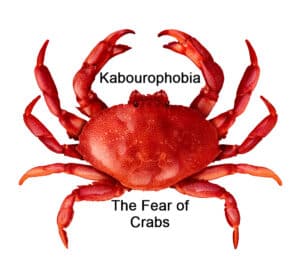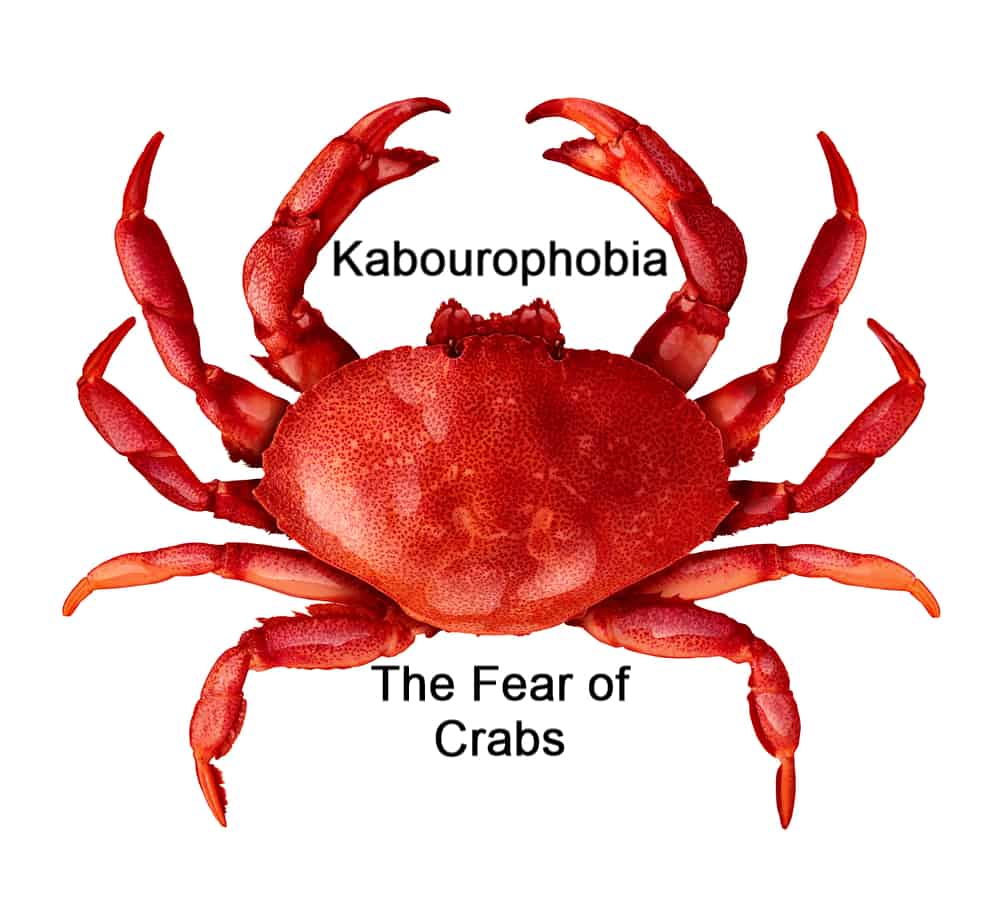Share This Article
The Clawed Nightmare: Overcoming Crab Phobia
Do you get the creeps when you see a lobster tank at a restaurant ? Have you skipped dinner invitations, because you know they would be serving buttery crabs?
If you can relate to these situations and know the culprit is the crustacean crab, it’s not just because you’re allergic to seafood. You may be dealing with kabourophobia or the phobia of crabs.
Finding out that you have a specific fear of crabs can feel silly, but this is a very real phobia that can have a debilitating impact on your life. You may even feel embarrassed trying to explain this fear to friends and family who may not fully understand.
Fortunately, there are many practical ways to manage and even overcome your fear of crabs. Let’s dive in.
Kabourophobia Meaning
If you’ve been dealing with this phobia and wondered what the fear of crabs is called, it’s kabourophobia.
Kabourophobia a specific phobia and a recent discovery. It’s an uncommon fear, which is why you won’t find it among the list of common phobias. But it is a real fear, one that can affect your daily life and overall well-being.
An individual with kabourophobia may be terrified at the mere thought of crabs. They may not only avoid going anywhere near beaches or the sea but may also avoid seafood restaurants. They might even turn away if they see an image of a crab.
Kabourophobia can also be associated with ostraconophobia, which is the fear of all shellfish, including clams, lobsters, shrimps, and crabs.

Kabourophobia Causes
Like almost all phobias, there is no way to pinpoint the exact reason behind the onset of the fear of crabs. Generally, genetic and environmental factors are considered the most likely reasons for developing kabourophobia.
For instance, a traumatic childhood experience of getting bitten by a crab, or experiencing crab poisoning, can cause one to develop a phobia.
Family members who have had a negative experience with crabs can also pass along their own fears to their children or relatives. This can cause someone to grow up with a fear of crabs.
A history of mental illness such as anxiety is another factor that can lead to developing kabourophobia.
Kabourophobia Symptoms
Generally, those with crab phobia can experience one or several of the following symptoms, with the severity depending on the level of phobia.
Physical Symptoms
- Chills
- Excessive sweating
- Fainting
- Headache
- Increase in blood pressure
- Nausea
- Palpitations
- Vomiting
Mental/Emotional Symptoms
- Anxiety
- Confusion
- Fear that something terrible is about to happen
- Irrational conclusions and assumptions
- Mood swings
- Unexplained dread and morbid thoughts
- Withdrawal from society
Kabourophobia Treatment
For any phobia, acknowledging your fear and accepting you need help is the first step toward treatment and recovery.
Self-Help Options
When you want to overcome your phobia, it’s important to understand that your battle is not against the crab, but rather a mental battle against yourself. Here are some of the most effective self-help techniques that can help you deal with your fear and triggers:
- Write in a journal
- Learn breathing exercises
- Meditate to calm your anxiety and be better able to deal with panic attacks
- Use exercise to release your fear
- Try yoga to bring more stability to your life
- Take note of your triggers and how you initially react to them
Professional Help
While you continue self-treatment, you can also seek the service of a licensed therapist to help you manage your phobia. Many dealing with phobias, including kabourophobia, benefit from talking with a professional who is better equipped to help one understand and deal with their fear.
A therapist will typically recommend one or more treatment options and work with you at your own pace. The most common therapies are:
Cognitive Behavioral Therapy (CBT)
With CBT, your therapist will help you identify your thought patterns and reactions surrounding your phobia triggers and help you slowly shift them into better, more positive responses.
Exposure Therapy
The goal of exposure therapy is for you to slowly comprehend that the source of your fear—the crab—is not something to be afraid of. You’ll be exposed to crabs to varying extent over some time in a controlled environment until you feel comfortable enough to not have an extreme fear reaction.
Narrative Therapy
Telling your story about your fear can help you feel empowered and realize there’s nothing to fear. With narrative therapy, you can start rewriting your future beyond your phobia.
Mindfulness Training
This training aims to help you stay grounded in the present and avoid all the what-ifs that tend to make phobia worse. You’ll be guided to slowly understand how much your thoughts can impact your actions.
Learning to Live with Kabourophobia
When dealing with and seeking treatment for kabourophobia, always remember that your fear—despite how irrational it may seem—is valid. And so are your feelings of anxiousness.
It will make a difference if you can start a conversation about your fear with those you trust, so you can have a support system. There are also online support groups you can join, which can offer some comfort knowing you’re not alone.
It’s important for a person suffering from kabourophobia to understand that crabs are generally afraid of humans and would rather stay at a safe distance. These crustaceans also don’t proactively attack unless they feel threatened. So, there is no imminent threat or danger.
And although the recommended self-help and professional treatment options are always within reach, it’s important to note that results are not immediate.
Learning to manage your fear is the best way to live side-by-side with crabs. And with continuous therapy and professional intervention, you may soon discover that crabs are completely harmless.
Final Thoughts
Suffering from any phobia, including kabourophobia, can make you miss the simplest joys in life. But with a mindset committed to overcoming your fear, you might soon find yourself enjoying the beaches and maybe even sampling the delicious crustaceans on the menu.



